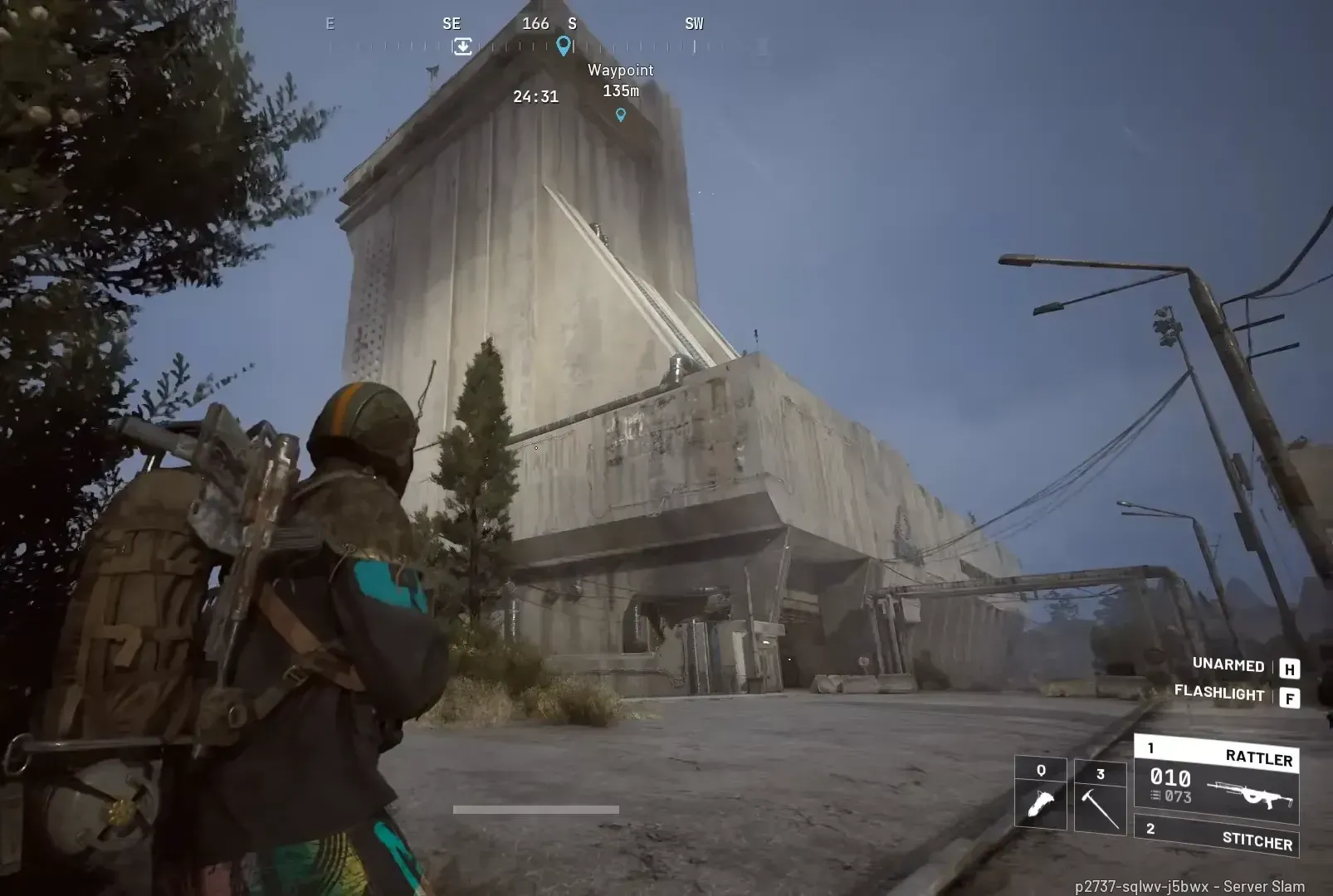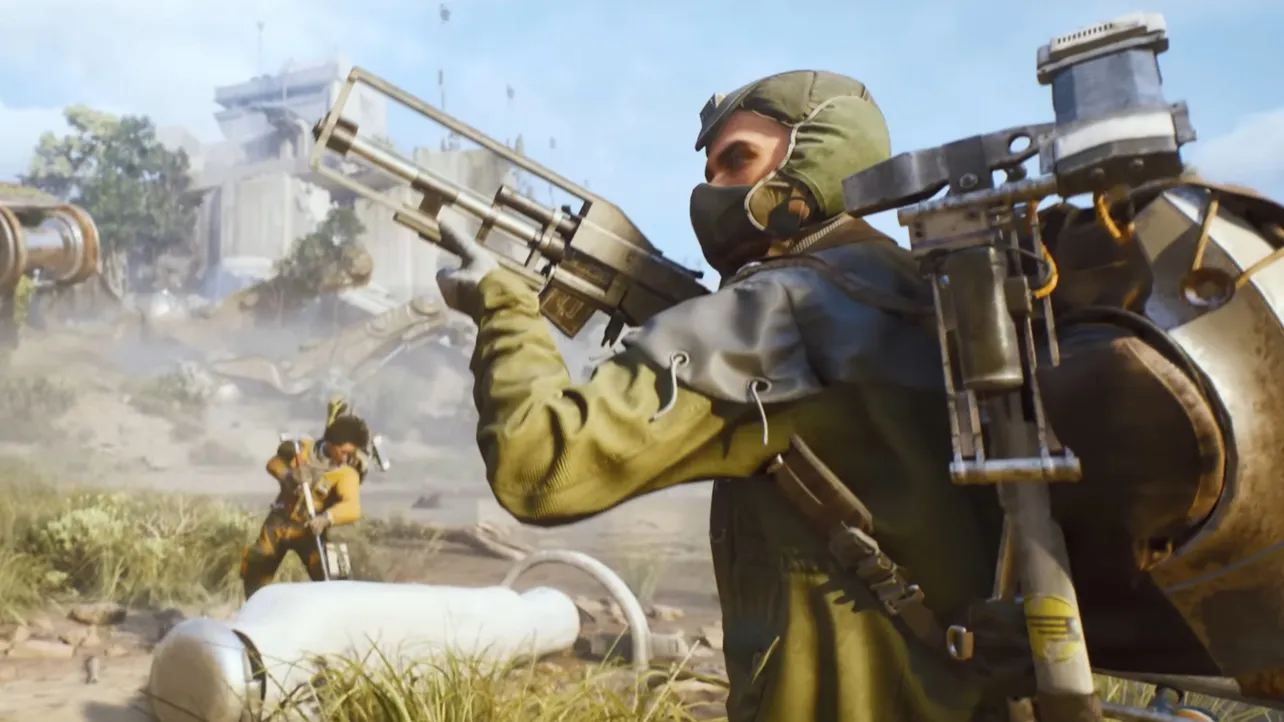ARC Raiders is built on Unreal Engine 5, and that choice underpins both the look and the feel of Embark’s third‑person, PvPvE extraction game. The world leans into bold, high‑contrast vistas — the remains of Italy’s architecture welded to heavy spacefaring infrastructure — while pushing large outdoor spaces, roaming machines, and squads crossing paths under pressure. It’s a style and scope that work well with UE5’s modern toolchain and cross‑platform runtime.
ARC Raiders engine, platforms, and release at a glance
| Item | Details |
|---|---|
| Engine | Unreal Engine 5 |
| View/genre | Third‑person, multiplayer extraction (PvPvE) |
| Developer/publisher | Embark Studios |
| Platforms | PlayStation 5, Xbox Series X|S, Windows PC (Steam, Epic Games Store) |
| Cloud | GeForce NOW |
| Cross‑platform play | Supported across PlayStation, Xbox, and PC |
| Release window | October 30 |
What UE5 brings to a large, outdoor PvPvE game
UE5 is a modern, cross‑platform engine designed for large‑scale environments and rapid iteration. For a game like ARC Raiders — wide, open spaces with long sightlines, fast traversal, squads converging from different vectors — that translates into predictable asset streaming, flexible lighting pipelines, and a renderer that scales down gracefully when the action spikes. The result is a world that holds visual cohesion at distance while staying readable and responsive when fights get up close.
The art direction in ARC Raiders leans into this strength. Landscapes mix bright natural light with harsh, utilitarian structures, and enemy silhouettes are bold enough to parse quickly against varied backdrops. That’s not just aesthetics; it supports faster target identification and clearer decision‑making under the time pressure common to extraction games.
Why performance feels strong — and why that isn’t “black magic”
When a UE5 game runs well on a broad range of hardware, it’s less about a hidden switch and more about production discipline:
- Strict content budgets. Keeping polygon counts, texture sizes, and material complexity under control across thousands of assets prevents spikes.
- Aggressive streaming strategy. Moving data in and out of memory in small chunks lets large maps load quickly and helps maintain stable frame pacing.
- Feature scalability. Turning expensive effects up or down per scene or per device keeps visuals convincing without wasting cycles where they aren’t noticed.
- Custom code paths where it matters. Targeted optimizations for AI, physics, or networking offload the hot spots that generic systems can’t always cover.
UE5 can absolutely ship highly performant games, but it takes that kind of day‑to‑day tuning. The upshot for players is simple: ARC Raiders presents big spaces, dynamic firefights, and fluid traversal without the frame drops that can break an extraction run.
Cross‑platform parity and matchmaking
ARC Raiders supports social play across PlayStation, Xbox, and PC. Cross‑platform support typically puts pressure on consistency — input, animation timing, and network prediction need to match across device families — and UE5 helps here by providing identical core systems across all targets. Expect a unified feel to movement and gunplay, and lobbies that don’t split friends by hardware.

How the setting leverages the tech
The game’s fiction — a post‑post‑apocalypse where Italian heritage sites meet heavy orbital infrastructure — suits UE5’s ability to juxtapose high‑detail hero assets with broad, performant landscapes. Towering machines read clearly against open skies; derelict gantries and colonnades create cover layers that are easy to parse; and the subterranean cantina hub provides a contained space for social systems and loadouts without the streaming overhead of the surface.
What engine choice does not decide
It’s easy to credit the engine when a game looks good and runs well, but engine choice doesn’t determine key design outcomes. The following traits come from team priorities, not from UE5 itself:
- How fast characters accelerate, stop, and mantle under stress.
- How readable enemy behaviors and telegraphs feel when squads collide.
- How extraction risk ramps — spawn logic, sound occlusion, visibility — as the clock runs down.
UE5 gives the tools; the production sets the constraints and the craft fills in the feel.
Where to play and what to expect at launch
ARC Raiders is slated for PlayStation 5, Xbox Series X|S, and Windows PC, with cloud play available via GeForce NOW. Cross‑platform social play is supported, so you can team up regardless of device. The game targets an October 30 launch. Expect the usual day‑one cadence for a live extraction title: balance tuning, server adjustments, and quick patches to keep matchmaking responsive as the player base ramps.
ARC Raiders runs on Unreal Engine 5, and it uses that foundation to deliver a large, cohesive world with responsive performance across current console and PC hardware. The rest — the tension between squads, the scramble to extract under pressure — comes from the decisions Embark layers on top of those tools.

